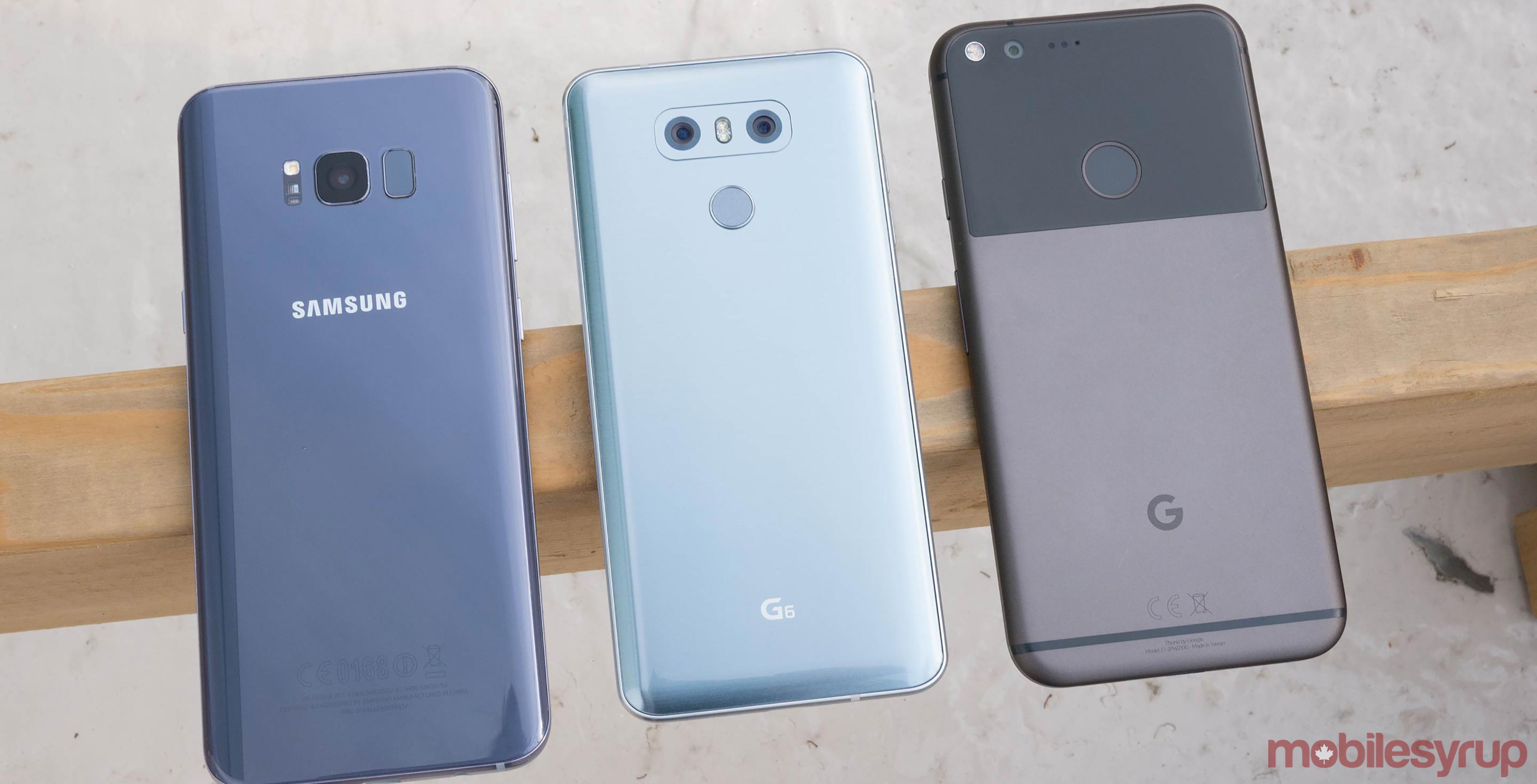
A new forecast from the International Data Corporation (IDC) Worldwide Quarterly Mobile Phone Tracker estimates that worldwide smartphone shipments will grow three percent in 2017 over the previous year. In 2016, year-over-year growth was only 2.5 percent, which was the lowest growth ever experienced by the industry. IDC says that with several new smartphones being introduced in 2017, including the Samsung Galaxy S8 and S8+, shipment volumes will grow to 1.52 billion throughout the year. This momentum is also expected to carry into 2018, with smartphone shipments forecasted to grow 4.5 percent year over year thanks to improved economic conditions in many emerging markets and a suite of new iPhones.
In the press release, IDC also broke down figures per phone platform:
Android
“The discussion around Android’s share of the smartphone market became irrelevant a few years back,” IDC wrote, as Google’s OS has continued to capture roughly 85 percent of the worldwide smartphone market. What is interesting is to look at the many micro-trends going on within the platform. IDC says it expects the Middle East and Africa regions for Android devices to show the fastest growth at 10 percent year-over-year, which will help overall worldwide growth reach 4.1 percent.
iOS
Last year marked the first time that iPhone shipments declined, but 2017 expectations say that 2017 volumes will grow 3.8 percent. IDC’s 2017 projections for Apple were slightly lowered for the 2017 forecast to 223.6 million, while 2018 volumes were increased to 240.4 million. “All signs point to late 2017 and certainly 2018 being very strong for Apple as much of its installed base seems ready for a refresh and the next round of iPhones is not likely to disappoint its fans,” IDC wrote.
Windows
Windows Phone shipments have continued to drop, and IDC expects volumes in 2017 to decline nearly 81 percent to just 1.1 million units. “Microsoft has yet to fully commit to any “Surface”-style attack for smartphones or to push new vendors to embrace the platform, leaving little hope of mounting a full scaled comeback in the years to come,” IDC wrote. It’s worth noting that Microsoft CEO Satya Nadella said the company hasn’t given up on smartphones. Earlier this month, Nadella said that he’s “sure [the company will] make more phones, but they will not look like phones that are there today.”
Keeping the momentum going
IDC cited several factors that it believes will help the smartphone market to regain some of its momentum going forward. “First and foremost is that less than half the world’s population is currently using a smartphone, and markets like the Middle East & Africa, Central & Eastern Europe, and Southeast Asia still have plenty of room to grow,” said Ryan Reith, program vice president with IDC’s Worldwide Quarterly Mobile Device Trackers. “In addition, as consumers continue to demand more from their smartphones we expect to see a large portion of the installed base that is currently using low-end devices begin to seek a more robust experience on more capable devices. Media consumption, gaming, augmented and virtual reality, and constant connectivity are drivers of this trend.”
More innovation is needed
The report also noted that companies will need to start offering more with their phones to make a bigger splash. “With the ongoing fight at the high end, vendors will need to find a way to innovate ahead of the curve to attract new users and increase shipments while driving profits,” said Anthony Scarsella, research manager with IDC’s Worldwide Quarterly Mobile Phone Tracker. “The display looks like it could be the next battlefield for the smartphone over the next couple years. As smartphone owners continue to consume media on their devices, the screen (bigger, brighter, and bolder) will be an integral part of the overall design language for each vendor.”
Recent reports seem to corroborate what Scarsella is saying. Apple has reportedly already ordered 60 million OLED panels from Samsung for its upcoming iPhones. As well, Google is said to have invested nearly $900 million into securing OLED screens for its upcoming Pixel 2 phone and LG might be set to release its first ever smartphone carrying this display in the third quarter of 2017.
Source: IDC
MobileSyrup may earn a commission from purchases made via our links, which helps fund the journalism we provide free on our website. These links do not influence our editorial content. Support us here.


